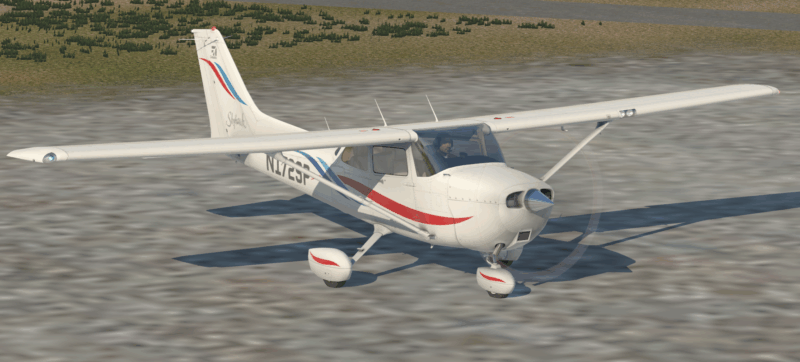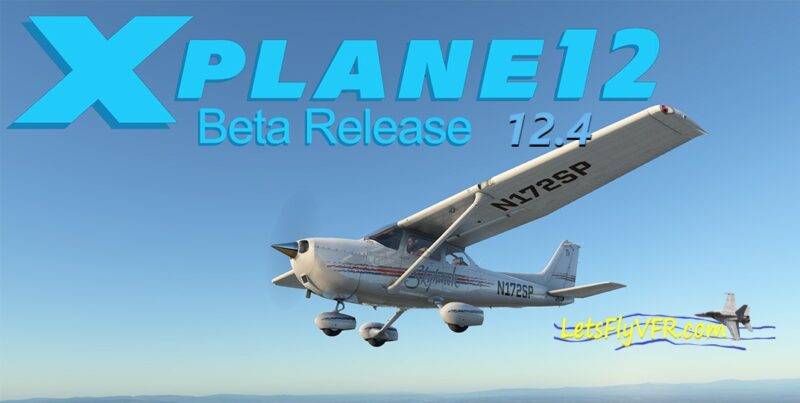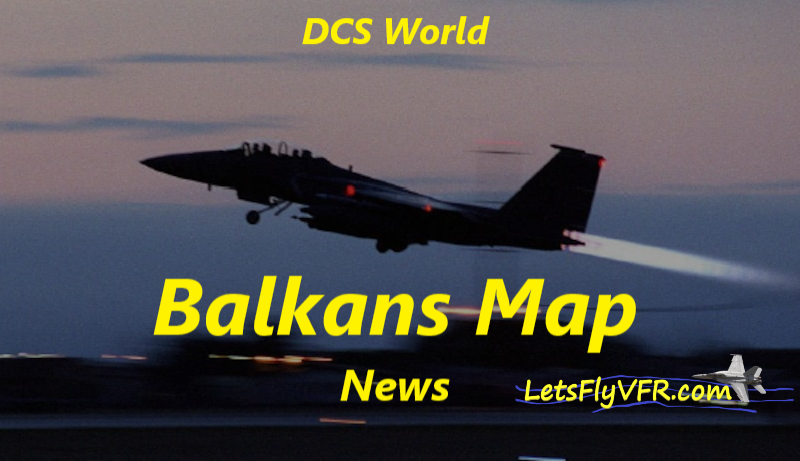Discover Everything You Need to Know about Flying a Cessna 172.
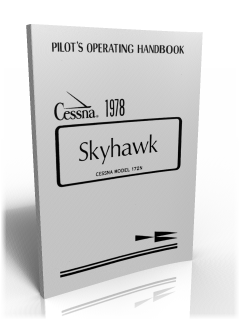
Introduction to Flying a Cessna 172
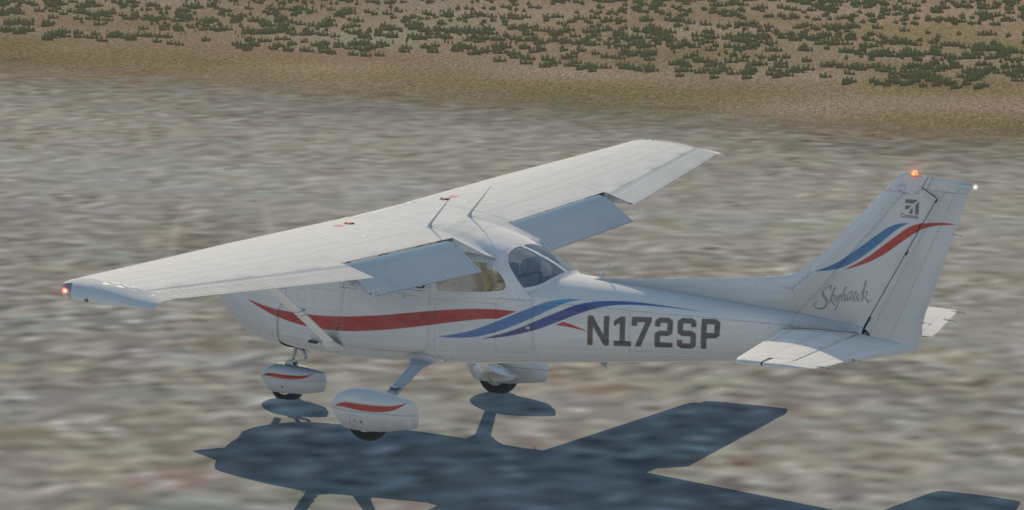
This introduction to flying the Cessna 172 is intended for all avid flight simulator users. The Cessna 172 is a real flight simulator favourite and has been included in every general aviation flight simulator since FS 2004 or even before. The latest flight simulators such as X Plane 11, Prepar3D and Microsoft Flight Simulator 2020 all include very detailed versions of the might Cessna 172. Its popularity in flight simulations has mirrored its real-world popularity having over 44,000 aircraft being built since 1955. Let’s take a look at the aircraft from a flight simulator perspective since I’m not a qualified flight Instructor but I have real world flying experience. Let’s put some of this together with simulator experience and get you fully prepared to get flying this magnificent aircraft.
- Joystick / HOTAS – AMAZON.com
- Rudder Pedals – AMAZON.com
- Throttle Quadrant – AMAZON.com
- Gaming Chair – AMAZON.com
- VR Headset – AMAZON.com
Cessna 172 Checklist.
The Checklist is your absolute guide to operating the Cessna 172 effectively even in a flight simulator. Cessna 172 checklists cover every aspect of operation from walk around checks, emergency procedures and there are quite a few covered. Any emergency your likely to cover from airborne fires, landing with a flat tire to list a couple. Download it HERE
Cessna Cockpit.
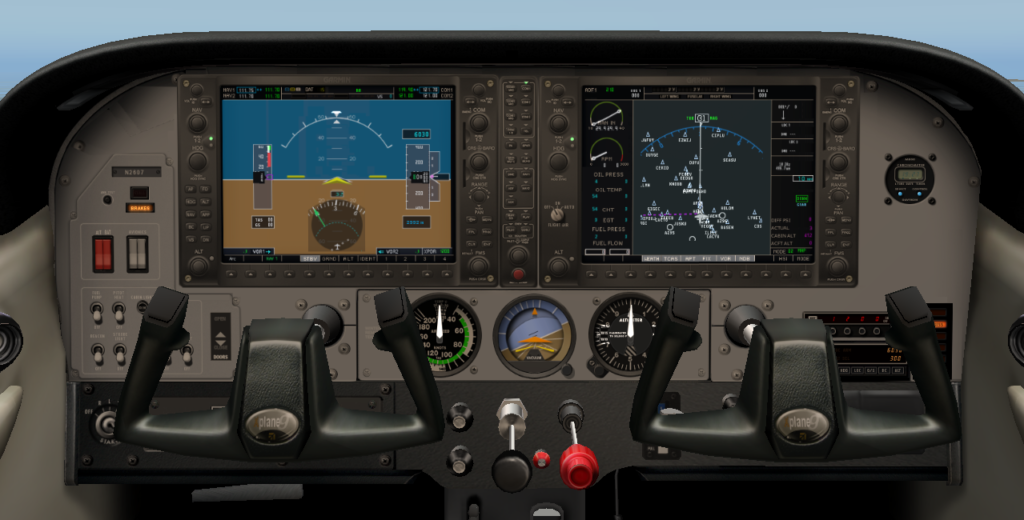
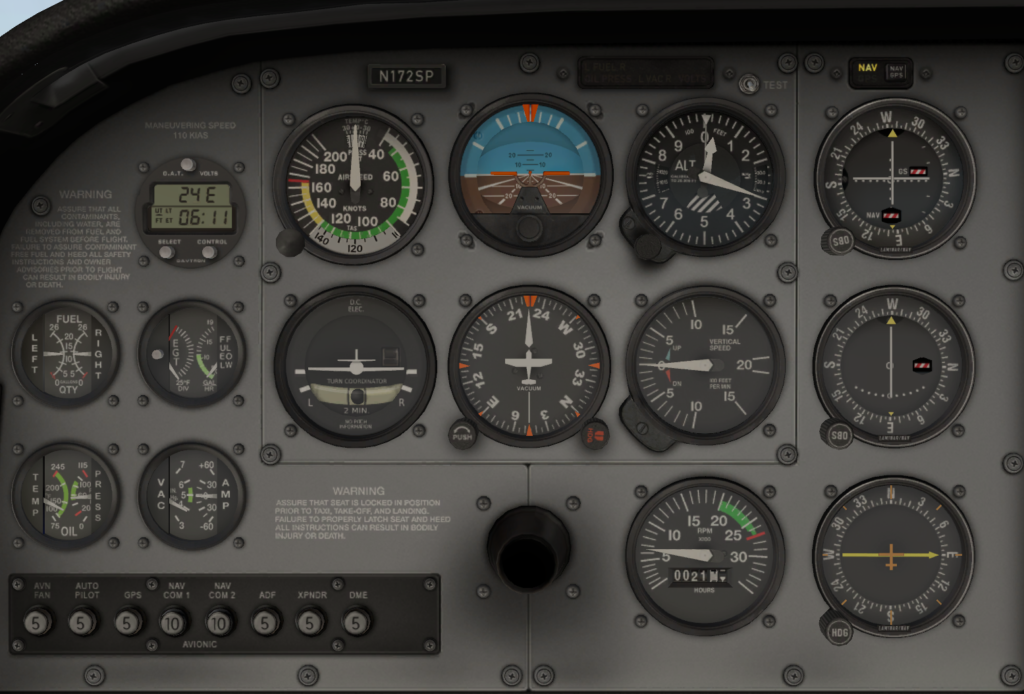
The cockpit in the Cessna 172 is pretty basic but in flight simulators like X Plane 11 as well as Microsoft Flight Simulator 2020 there are options for upgrades on the old steam gauges with Garmin G1000 Avionics and GPS. Certainly are some great options and give you a modern feel.
The Cessna 172 still has a lot to learn as far as systems even in the older steam powered gauges. You have Engine, electrical, Instrument, radio, navigation systems to learn. It point of take a bit of time so take your time. This is the ideal aircraft to start and learn your pilot craft in X Plane 11 or Microsoft Flight Simulator 2020 for sure.
The average pilot takes about 40 hours learning flying a Cessna 172 and pass their private pilot license flying on average it’s more like 55 for most pilots. You also have to sit your Air Navigation plus the dreaded exams. You will need to pass nine separate examinations before taking your final PPL check ride. The exams are: air law, operational procedures, human performance, meteorology, navigation, flight performance & planning, aircraft general, principles of flight and communications.
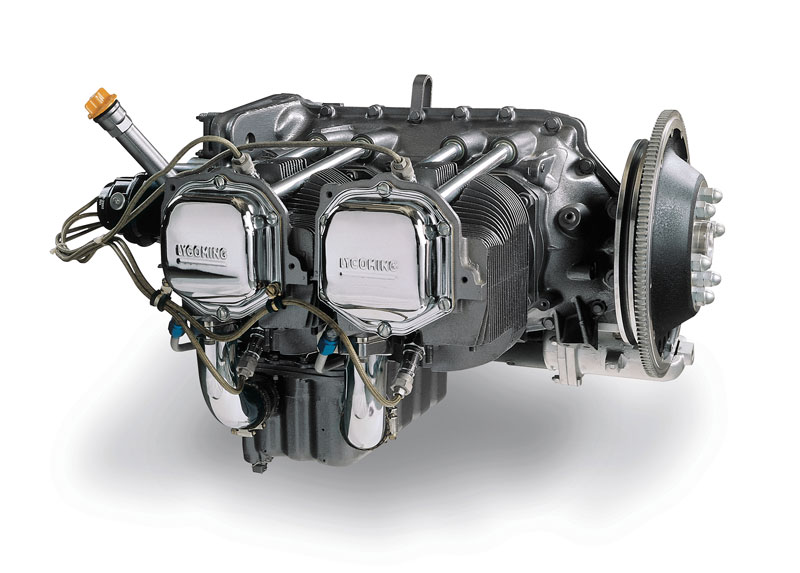
Cessna Engine
The Cessna Engine is a continental O-300 series which encompass 160-150 -145 HP engines. These are air cooled engines with a very long history and one of the most reliable engines available on the market. Lycoming Engines for the Cessna 172 are relatively expensive compared to car engines at $25,000 for a replacement so you need to plan this into your hourly flying.
Cessna Fuel Capacity
The fuel capacity in a Cessna 172 us 48 gallons with 21.5 in each wing. As you can see in the diagram the two wing tanks feed into a central fuel selector switch and this is fed to the carburetor
The other fuel controls are the Throttle and mixture. The throttle is a black know located on the center instrument panel and does what all throttles do. Make you go fast by pushing it forward. There is also a mixture lever to adjust the air fuel ratio. It is red and when full in the mixture is a rich as it can be, As you climb there is less air so the mixture becomes to rich. Gently pulling the mixture out can reduce the fuel mixture till an ideal mix is maintained and best poser is produced.
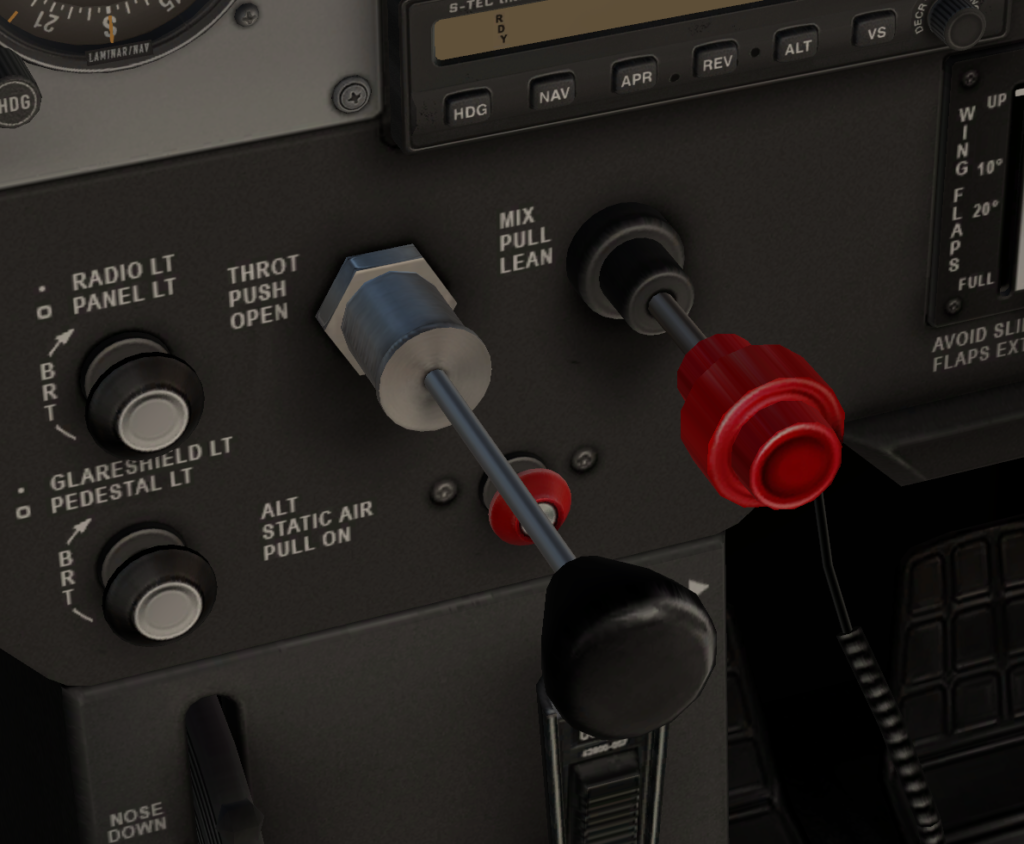
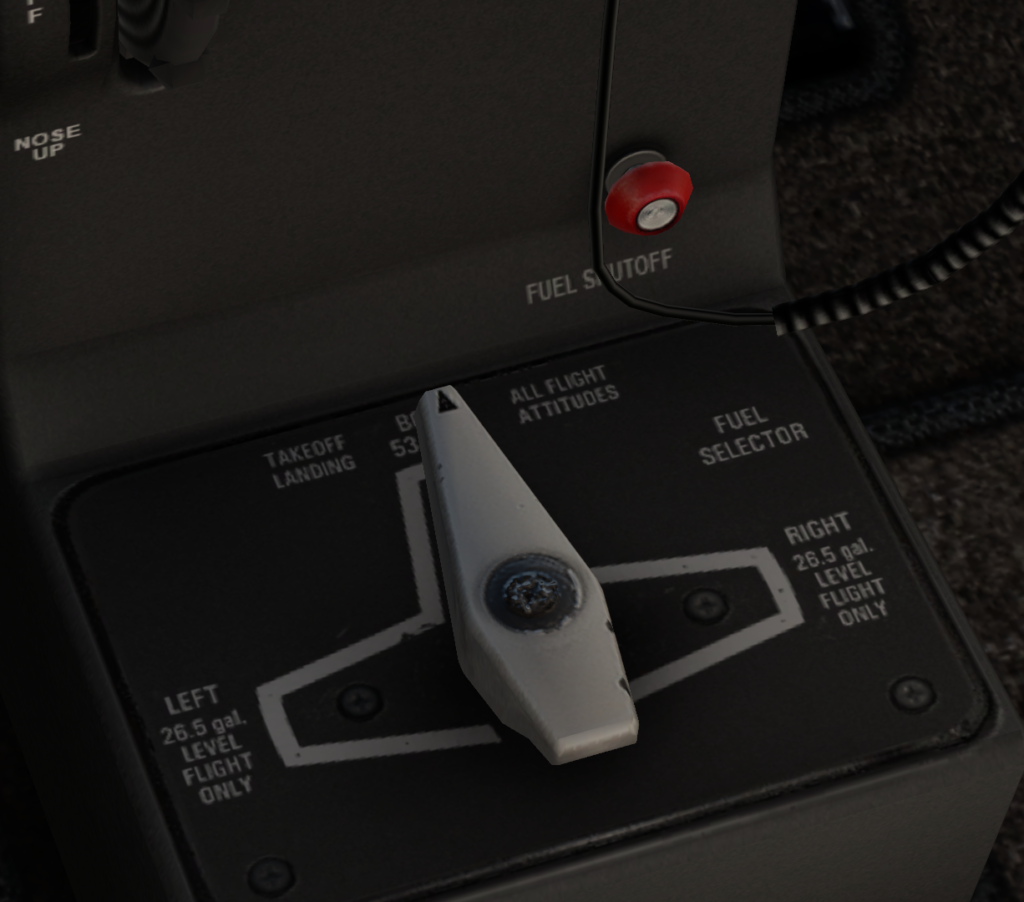
The fuel system also has boost pumps which are electrical backups for the mechanical fuel pump. These are on the left side of the instrument panel and used in takeoff, landing and any critical phase of flight situations. The fuel quantity indicator as well as EGT gauges are also located there. We will talk more of this later on.
The Cessna 172 stall speed like all aircraft is a factor of aircraft weight as well as weather conditions. For example landing at seal level and landing at a much higher altitude like 4000 ft in the mountains requires caution. This comes down to air density which is a subject we can cover later but be it suffice to say as the density altitude gets higher the wings become less effective and require more speed to maintain lift.
Cessna 172 Stall Speed
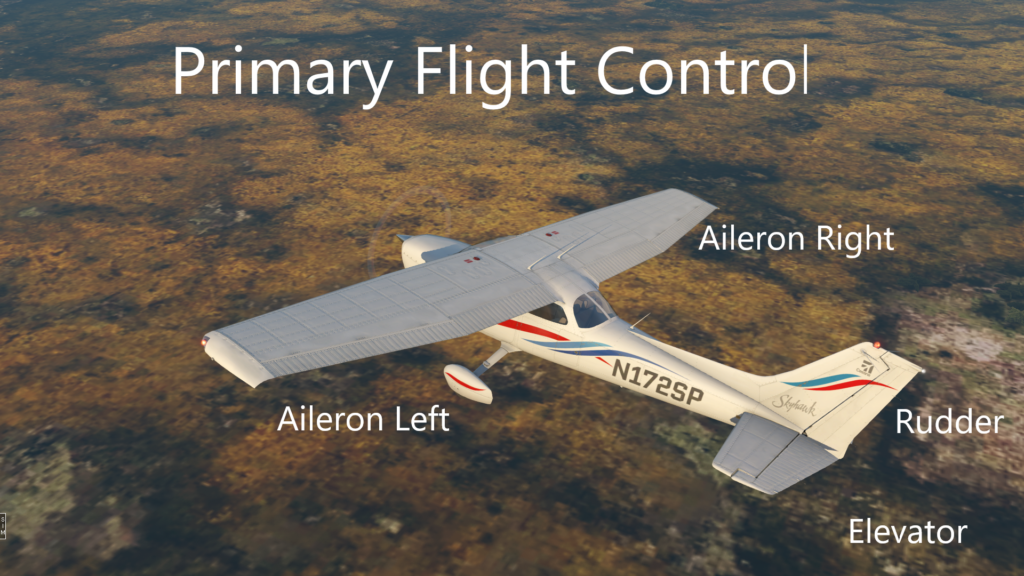
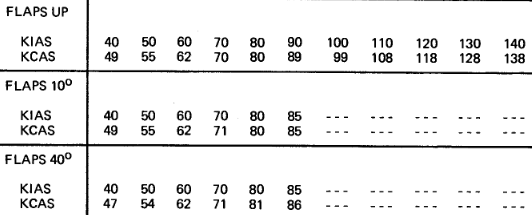
Generally stall speed at sea level is 50 knots with flaps up, 43 knots in landing configuration flaps down but there are variances so you need to check your pilot operating handbook.
Cessna 172 Speeds.
Like all aircraft the Cessna is not different in having a series of specified speeds for pilots to follow. From take off to landing with flaps down or not there is a speed to remember. The maximum speed as well as max speed in rough conditions is also specified so lets look at what is most commonly called the V speeds of the Cessna.

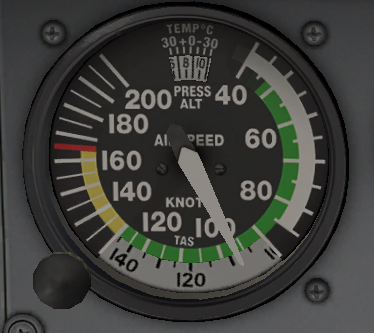
In this table from the pilot operating manual for the Cessna we can see the most important speeds. The other part of this is the air speed indicator colors used as a reference. There are several colors giving the pilot a quick visual reference.
This Air Speed indicator is what we would see in our 172. There are white areas where flaps can be deployed, the green normal operating range. The yellow ark is an area of caution, and the max rough air speed should be used in this region so as not to possibly damage the aircraft. Beyond this is the limit of the aircrafts safe speed. Passing the red line or Vne is flirting with catastrophe.
Cessna 172 Maneuvering and Aerobatics.
The Cessna is able to do some basic aerobatics providing the weight of the aircraft is correct. Being too heavy can cause additional stress so a pilot must make allowances for this. Note the aircraft is not permitted to loop, barrel roll or aileron roll in the real world but if you’re in Microsoft Flight Simulator 2020 or X Plane 11 then it certainly is possible. To learn these manoeuvres there are a lot of videos on YouTube and even LetsFlyVFR has a series of learning to fly videos with some emergency procedures actually flown like engine fails, stuck elevators and fires to mentions a few.
What are the V Speeds of a Cessna 172?
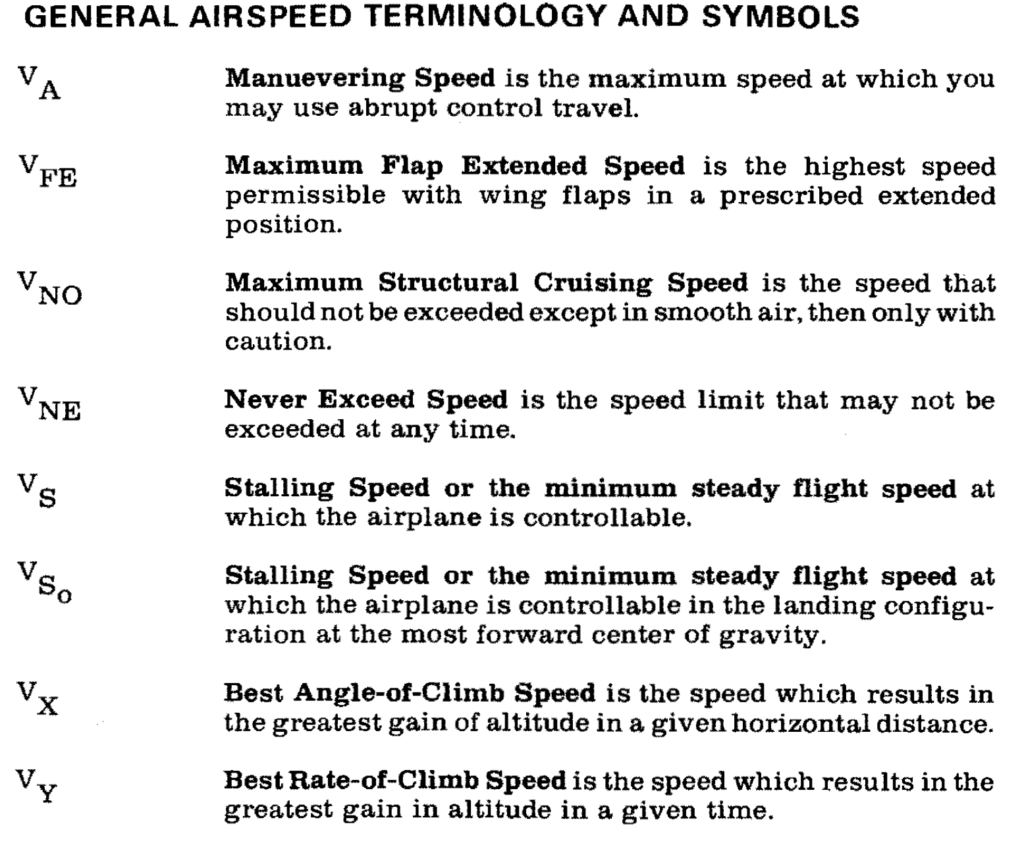
What are the V speeds of a Cessna 172 and what do they dictate to pilots.
Well V speeds are speeds that have been determined by engineers and test pilots for the operation of the aircraft.

They list stall speeds with and without flaps extended as well as the speed you can fly through rough air and not damage the aircraft as well as the maximum speed the aircraft is allowed to fly. All of these are in a table I have below.
What is the useful load of a Cessna 172?
What is the useful load of a Cessna 172 is a great question because if we get the aircraft to heavy, we won’t be able to take off. We need to know how much and what weights we can store in the aircraft along with fuel and passengers.
Adding the total weight of the aircraft and even the oil in the engine are all part of knowing the Useful load and max weight of the aircraft. Maximum weight and useful load are slightly different so let’s look at them both.
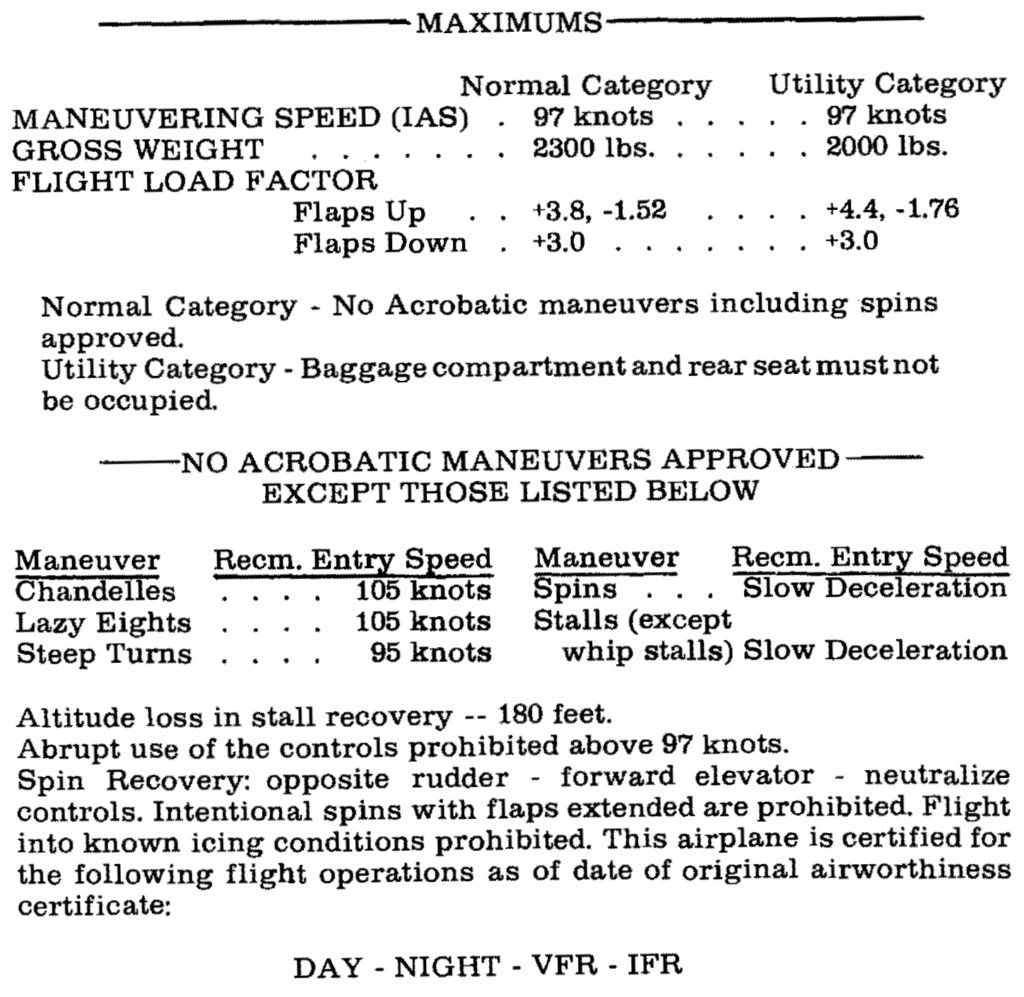
The aircraft placard is a very important document and is placed in every aircraft including the X Plane 11 Cessna and MSFS 2020 cockpit. Here you can quickly reference the weights like max weight easily.
The placard for the 172 says we have a max take-off weight of 2300 lbs. The utility weight is 2000 lbs which is a weight the aircraft can do some manoeuvres safely as listed above.
Cessna 172 Takeoff.
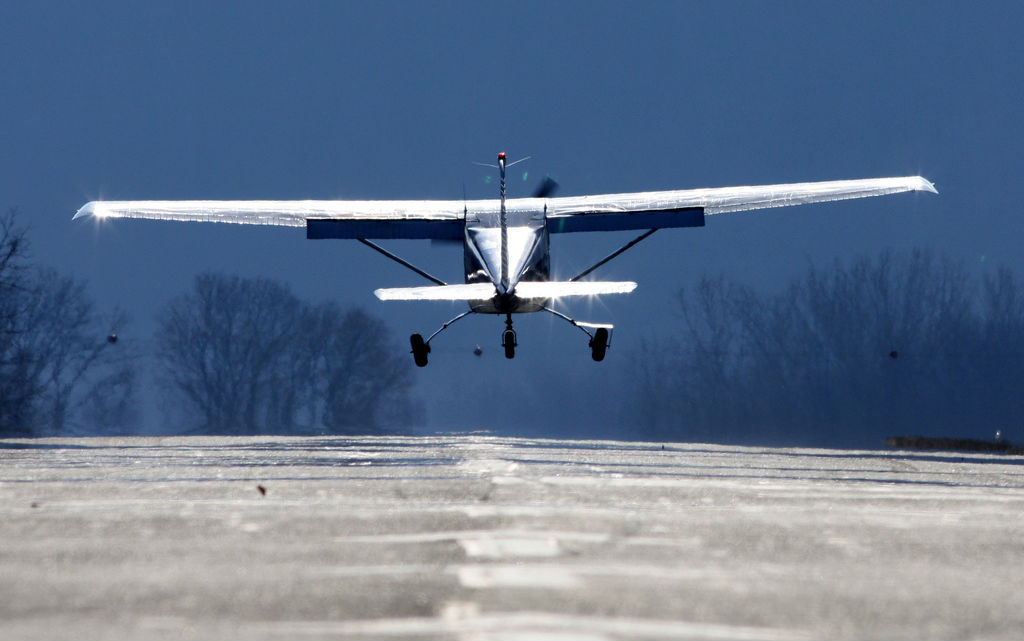
Executing a take-off in a Cessna is like most other single engine aircraft.
Lined up on the runway you push the throttle slowly forward while adding rudder to counteract the normal tendency due to engine torque to go left. As you accelerate at 55 knots simply ease back on the controls and the aircraft will very soon lift off on its own.
It sounds easy but there is a lot of finesse when flying an aircraft. A lot of the aircraft reactions are not modelled as accurately as we would like but it’s pretty good in X plane 11 and Microsoft Flight Simulator 2020.
I have done hundreds of real-world take-offs and landings in the Australian built Jabiru 160, Jabiru 170 and the Jabiru 230 aircraft and they are never the same. Wind plays a big part in the take-off and landing of the aircraft as well as turbulence near the ground. You are always making small adjustments as you roll down the runway.
Cessna 172 Landing Speed.

The Cessna has a gentle landing speed with the approach flown at 70 knots and as you pass the threshold of the runway you simply return the throttle to idle and gently hold the aircraft off in the ground effect. The aircraft can be held till its stall speed just above the ground so that’s down in the 40 plus knot range. This is when you hear the horn sound, and you hopefully settle gently on the runway.
The hardest part of landing is getting use to the rush of the ground towards you as you come into land. This is quite daunting initially and really unless you’re in Virtual Reality VR you will never really appreciate this moment in time. As you pass over the runway you MUST move your point of view from the runway to the horizon.
If you don’t you will fly the aircraft hard into the ground on most occasions. The picture you should see is as per the picture adjacent. The nose is raised slightly offering the main wheels to the runway. Never let the nose wheel hit first.
Flying the Cessna 172 Video Tutorial.
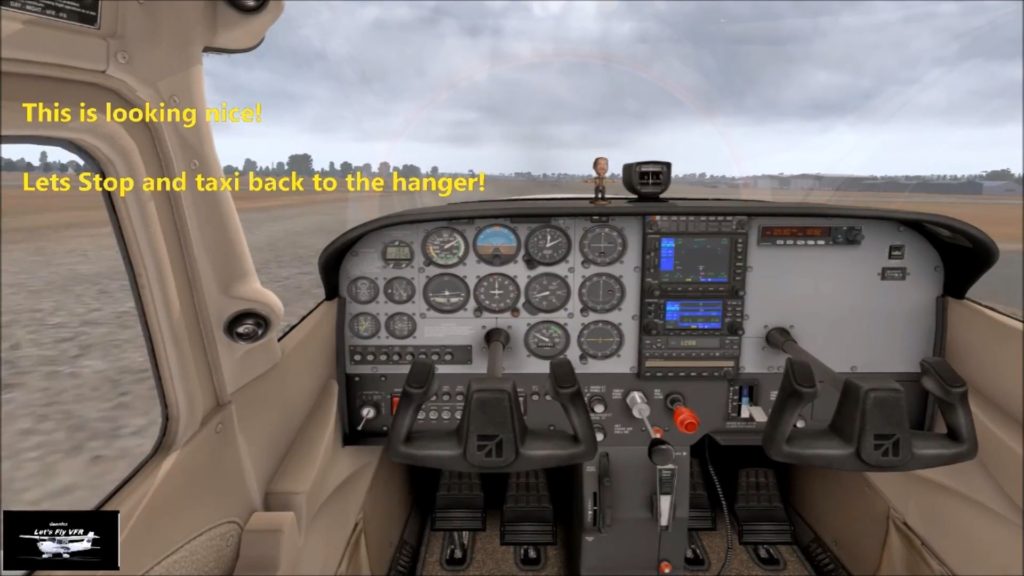
The series of videos show you the basics of flying the aircraft as well as some emergency procedures. Please remember as always these are created for entertainment and not for real world flying instruction. There is a perfectly good Qualified Flying Instructor at your flying field or airport for that.
Getting the most out of your Flight Simulator.
If you’re looking to make your flight simulator experience as good as it can be then please considering some gear for your setup. You really want a good Yoke or joystick depending on the aircraft you like to fly. If it’s a mic then a quality joystick or even a full HOTAS hands on throttle and stick combination will suit you. Often forgotten are the rudder pedals.
These are integral to every turn, climb and decent you will do as well as crosswind landings and aerobatics so please do yourself a favour and get some when you can. Once you have got your controls setup to your liking and are looking to get more realism there are instrument packages as well as throttle/Prop/mixture packages or if you’re heading into, the jets airliner world you can find some great quadrants here.
- Latest CPU’s Available Now – Amazon.com
- Get a NEW GPU Best Performance – AMAZON.com
- Upgrade RAM Here today – AMAZON.com
- Prebuilt PC Options – AMAZON.com
Author

Brendon McAliece (Aka Gunnie) is a military veteran with 23 years working on Jet Fighters, their weapons systems and ejection seat/module systems as well as munitions and R&D. Involved with flight simulation since the 1980s, he has flown all the major flight simulators over the years.
He is an Australian expat who has lived in Malaysia, UK, Saudi Arabia and more recently Thailand. He is a multi-lingual blogger who loves to share his life experiences here on LetsFlyVFR.com and DreamingGuitar.com, with his lifestyle and Travel experiences Blog plus his Dreaming Coffee website.
Learn More @ DreamingGuitar.com – DreamingCoffee.com – LetsFlyVFR.com
( HOME – BLOG – SHOP – ABOUT )
As an Amazon affiliate I may benefit from qualifying sales.
B
